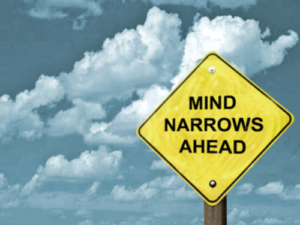Bias can be broken if you take the right steps. How do we deconstruct bias beyond awareness? How do we “break bias?”
We have a filter in our brain that helps us interpret what we see and hear. It
filters out information that is not threatening, not important and not in our
perceived reality.
We form our biases based on our experiences, what we hear and what we
see. Based on our biases we make assumptions, which result in actions,
which can lead to exclusion, discrimination or avoidance.
Much has been written about unconscious bias that we’re not aware we
have. We’re not responsible for the messages we received growing up, but
we are responsible for what we do once we become aware of the impact
those messages have had on our thinking and actions today. Too often the
discussion of bias only deals with recognition but lacks accountability and
transformation.
In addition, not all bias is unconscious. There is bias that is deliberate and
conscious and there is the bias that leads people to stereotypes others and
believe they are right. When our bias is unconscious, we’re not aware of our
actions and the impact that we have on others. When our bias is conscious or
deliberate, we are aware of our actions, but think we are justified because of
how we consciously feel about a whole group. It doesn’t occur to us that we
might be wrong.
If you think you either have no bias, know you may have unconscious bias,
or that you stereotype people different than you, read on.
Suggested action:
Be conscious of your visceral reaction or any thoughts or judgments you
have about the next 3 people you see. What story or impression
immediately comes to mind before you give it second thought?
Notice their age, clothing, skin color, age and any other visible
characteristics at the root of your bias and the first story you created.
Next create a different story about what they do and who they are. Seeing
other possibilities will help filter out your biases and wrong assumptions
about people.
Ex. You’re an extroverted White woman at a large dinner party interacting in
a discussion with different people sitting near you.
You’re sitting next to a Black woman named Charlene who is not looking at
you nor engaging in your discussion. You turn your back to Charlene and
ignore her the rest of the evening.
After the dinner you approach the host and tell her that you know Charlene
doesn’t like White people because she wouldn’t talk to you
The host who is also White informs you that Charlene is her best friend and
is extremely shy in groups and does much better in direct one-on-one
interaction, and that in fact the two of you share a love of spectator sports.
How could you have avoided making a wrong assumption about Charlene?
What was the basis for assuming she didn’t like White people.
How to Destruct Unconscious or Conscious Bias
• Become aware and admit that we all have biases, even you.
• Notice your initial thoughts when you are around people different than you
• Think and ask yourself:
– Where did this particular bias originate?
– What’s different today?Smart
• Determine whether you are forming an opinion based on an individual’s
actions, or because of a stereotype you have about the group you think
they represent
• If you have a bias about another person, be open to the possibility that you
may be wrong, and be willing to accept evidence that is counter to
your belief
` Be conscious of your biases before you act on them
• Take advantage of opportunities to interact with people who are different
than you. Look for areas of commonality.
• Be aware of you biases about specific groups and think of people you
know from those groups that don’t fit that stereotype.
• Examine those stereotypes and think back to where and when those
stereotypes originated.
• List your own dimensions of diversity, race, color, ethnicity, age, etc.
Think of messages you’ve heard about any of those dimensions, as
well as any time someone has made a wrong assumption about you
based on one of those dimensions. Doesn’t it sound logical that if
other people hold a stereotype or make a wrong assumption about you
based on your diversity dimensions, that you might be wrong about
them?
• As an exercise in breaking through bias, create a dialogue where you play
each other’s role, and speak as though you were the other person.

Recent Comments